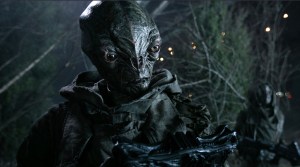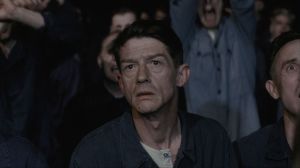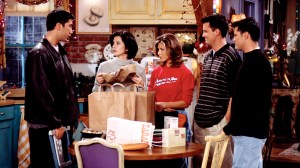
Image Comics has long been known to publish gritty, thoughtful, and groundbreaking stories that cover all corners of the human condition, and Shanghai Red is certainly no exception.
Videos by ComicBook.com
From writer Christopher Sebela and artist Joshua Hixson, Shanghai Red is a rugged revenge thriller about a woman named Red, who poses as a pirate to get back home and make right the troubles of her past. Issue #1 debuted to rave reviews this week (you can read ours here), and we spent a little time emailing back and forth with the creators themselves to get a feel for what it was like creating this new and unique adventure.
ComicBook: Where’d your inspiration for this project come from?
Sebela: Living in Portland, mostly. It’s one of the parts of Portland history that some parts of Portland revel in and most of Portland would prefer everyone forget. Portland was a corrupt wonderland of people getting sold to ship’s captains and everyone turning a blind eye to it. Finding out about the Shanghai Tunnels, which were a series of tunnels that allegedly were used to lock up people and move them onto boats in secret. It felt like a really fun way to explore my new home.
What initially drew you to the project, Josh?
Hixson: It was an amalgamation of it being Chris who was doing the asking, the fact that it was a revenge story, and that Chris wanted to try to go to Image with it. I was aware of Chris’s work and knew from the stuff he was putting out that he’d be an awesome writer to collaborate with. It being a book about revenge that he wanted to pitch to Image was just icing on the cake. I love the revenge genre and have been a huge fan of the kinds of books Image had been putting out; particularly in the few years leading up to 2014 when Chris first approached me. So it was it was a real dream project for someone like me who was just starting off in comics.
Why is Red’s story one that you guys wanted to tell?
Sebela: It’s a kind of story I’ve never told, in a real historical setting, approaching it with a sense of respect for the people whose stories influenced this one. It felt like a really hard story to tell, which is what drew me to it the most. I feel like that’s how I get better is painting myself into these corners and having to write my way out of it. As far as Red specifically, I think all of us deal with some confusion about who we really are, who we could have been or could be. Exploring that thru a fictional lens is cheaper than therapy.
Hixson: So, Chris had first explained the book as a revenge story set in 1890’s Portland and that was honestly enough for me to want to do the book. The fact that it was centered around a woman who gets shanghaied disguised as a man made it even more intriguing. And then, as I got more of the story, it was clear that he had put much more thought into Red’s character and what she would go through in the book. She’s much more than just a woman who disguises herself as man to survive.There’s so much depth to her character and the relationships we see her in feel authentic and real. All of which were super important in getting me to care about her story and the road of revenge that she was on. So it was a combination of all these things, but mostly it was just a real appreciation for her character and how unique she was.
When in the brainstorming process did you know you had something special on your hands?
Sebela: It’s always hard to pinpoint when a bunch of rough ideas becomes an actual story. That moment usually happens once I figure out the main characters and become invested in them beyond being pieces to move the plot along. Figuring out who Red was was a big step to getting me hooked into this book in a big way. Seeing Josh’s first pages was the other.
What sets Shanghai Red apart from your other projects?
Sebela: I feel like it’s much more serious and solemn in a way. I tend to use humor in my books as a way to dilute any of the sadness/bleakness that is wrapped up in my concepts. This felt like a project where I had to let the awfulness of what’s happened to Red really come through, because revenge is such a dark pursuit.
Did you have any difficulties bringing Red to life as a character?
Sebela: Yeah, she took time to figure out. A lot of which is because she’s trying to figure herself out throughout this story, she’s trying to incorporate who she is, who Jack is, who they are together. So I had to try to dig past all that. I also wanted her to feel real, to not just be some bulletproof badass who breezes through her crusade. She’s human, maybe driven by some stronger emotions than the rest of us, but she’s as breakable as we all are.
Hixson: Probably the fact that it had to be historically accurate. Getting photo reference is always a bit tough, but it was even more so for this particular time period. You can also easily get sucked into reading endlessly about all these different bits of history that you didn’t know about.
Did the gender-swapping style of Red pose any challenges from an artistic perspective?
Hixson: No, not really. We weren’t really worried about showing her as either too masculine or feminine, it was more of just considering what she would look like having gone through what she did and how her wardrobe would change depending on who she wanted to present as. That and her hair, which I don’t know that I’d describe as a challenge, but it was important to us to show that when she’s Jack she has her hair tinted black and pushed back or under a hat to pass as a man.
What’s next for these characters as the series continues?
Sebela: Red returns to Portland and starts to try and piece her life together, while she tracks down the people who put her on the boat that took her away from home for 3 years. Things get a little less oceanic but way more dangerous and bloody.








